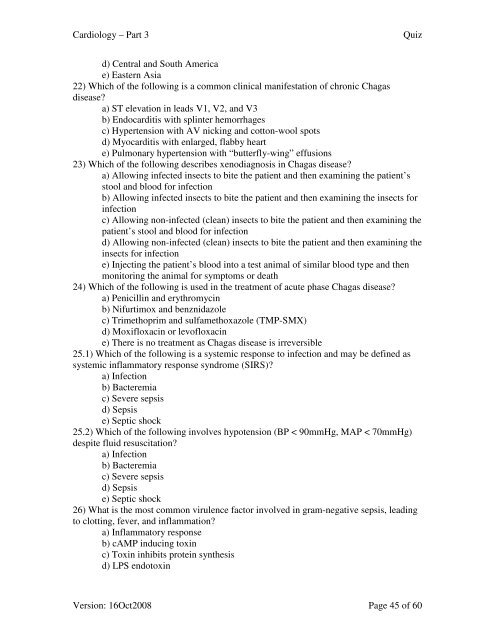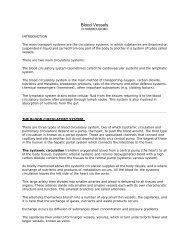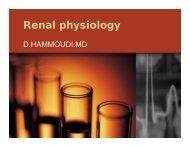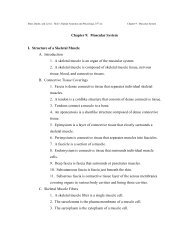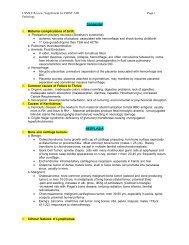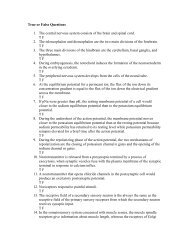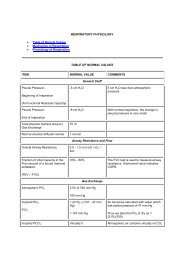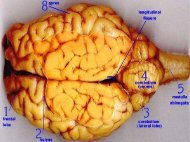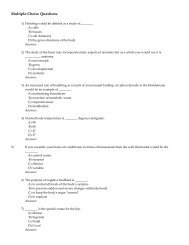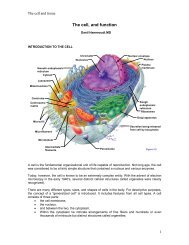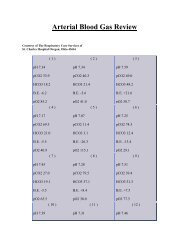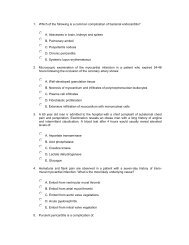Part 3 Quiz Version - Sinoe medical homepage.
Part 3 Quiz Version - Sinoe medical homepage.
Part 3 Quiz Version - Sinoe medical homepage.
Create successful ePaper yourself
Turn your PDF publications into a flip-book with our unique Google optimized e-Paper software.
Cardiology – <strong>Part</strong> 3<br />
<strong>Quiz</strong><br />
d) Central and South America<br />
e) Eastern Asia<br />
22) Which of the following is a common clinical manifestation of chronic Chagas<br />
disease<br />
a) ST elevation in leads V1, V2, and V3<br />
b) Endocarditis with splinter hemorrhages<br />
c) Hypertension with AV nicking and cotton-wool spots<br />
d) Myocarditis with enlarged, flabby heart<br />
e) Pulmonary hypertension with “butterfly-wing” effusions<br />
23) Which of the following describes xenodiagnosis in Chagas disease<br />
a) Allowing infected insects to bite the patient and then examining the patient’s<br />
stool and blood for infection<br />
b) Allowing infected insects to bite the patient and then examining the insects for<br />
infection<br />
c) Allowing non-infected (clean) insects to bite the patient and then examining the<br />
patient’s stool and blood for infection<br />
d) Allowing non-infected (clean) insects to bite the patient and then examining the<br />
insects for infection<br />
e) Injecting the patient’s blood into a test animal of similar blood type and then<br />
monitoring the animal for symptoms or death<br />
24) Which of the following is used in the treatment of acute phase Chagas disease<br />
a) Penicillin and erythromycin<br />
b) Nifurtimox and benznidazole<br />
c) Trimethoprim and sulfamethoxazole (TMP-SMX)<br />
d) Moxifloxacin or levofloxacin<br />
e) There is no treatment as Chagas disease is irreversible<br />
25.1) Which of the following is a systemic response to infection and may be defined as<br />
systemic inflammatory response syndrome (SIRS)<br />
a) Infection<br />
b) Bacteremia<br />
c) Severe sepsis<br />
d) Sepsis<br />
e) Septic shock<br />
25.2) Which of the following involves hypotension (BP < 90mmHg, MAP < 70mmHg)<br />
despite fluid resuscitation<br />
a) Infection<br />
b) Bacteremia<br />
c) Severe sepsis<br />
d) Sepsis<br />
e) Septic shock<br />
26) What is the most common virulence factor involved in gram-negative sepsis, leading<br />
to clotting, fever, and inflammation<br />
a) Inflammatory response<br />
b) cAMP inducing toxin<br />
c) Toxin inhibits protein synthesis<br />
d) LPS endotoxin<br />
<strong>Version</strong>: 16Oct2008 Page 45 of 60


